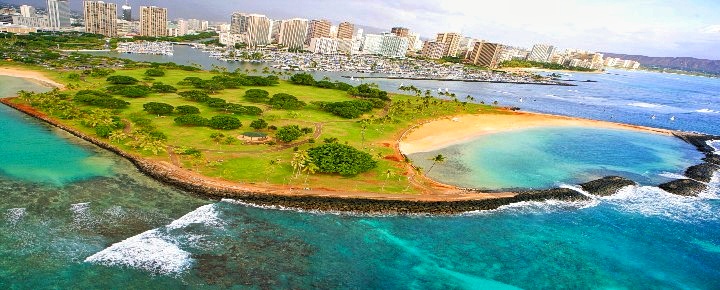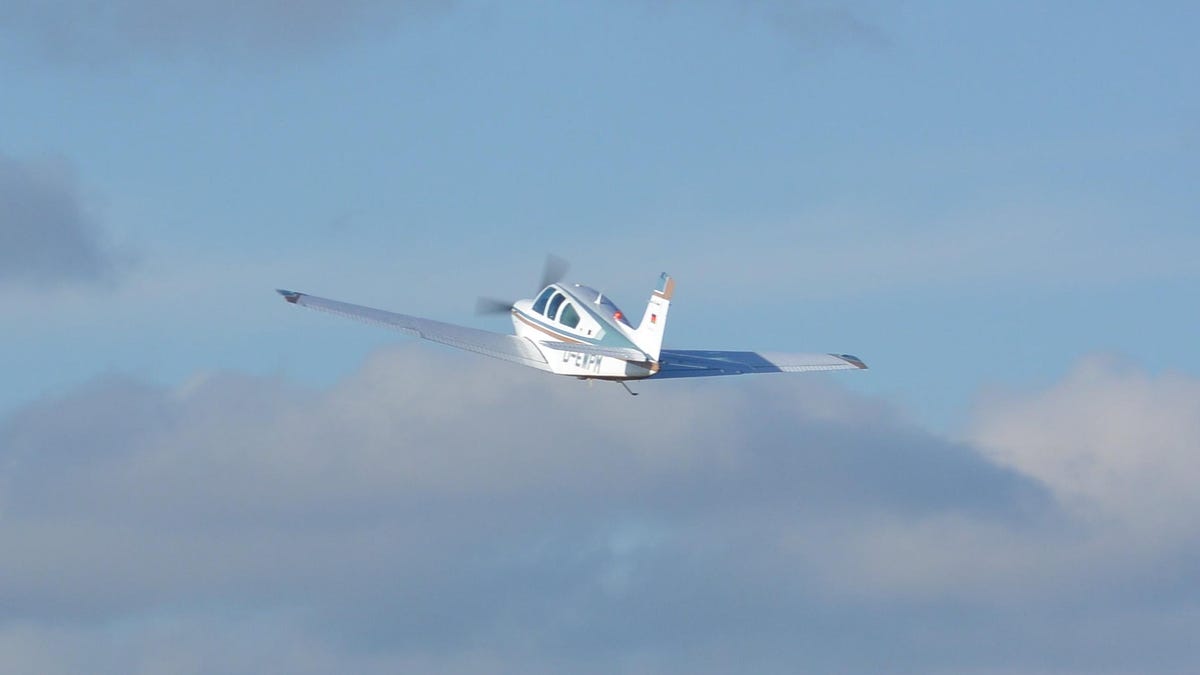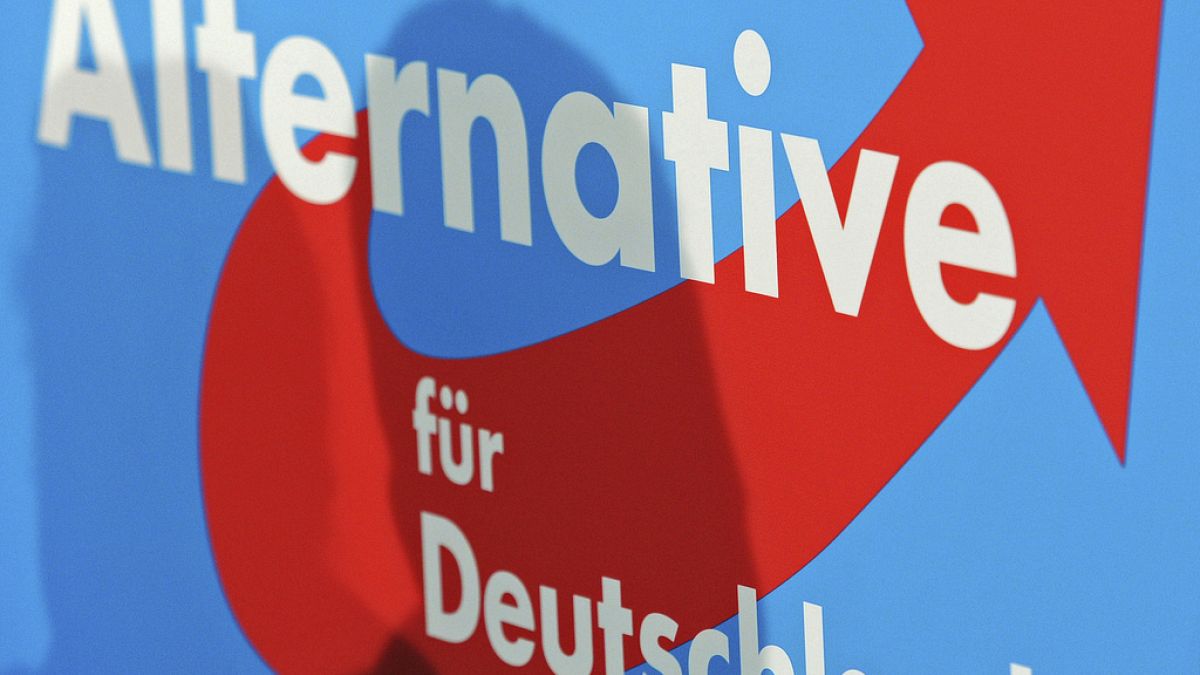Hawaii
Haiku Stairs hikers arrested during last-chance trek to Hawaii’s ‘Stairway to Heaven’

The soap opera surrounding Oahu’s Haiku Stairs — also known as the Stairway to Heaven — continues even as the famed landmark is being dismantled.
On April 20 and 21, the last weekend before demolition was to begin, police say that they gave out 60 warnings to hikers, eight citations for second-degree trespass and 25 parking enforcement actions. Second-degree trespassing is a misdemeanor.
On April 23, five people were arrested and charged with first-degree trespassing, according to CNN affiliate Hawaii News Now.
The staircase was built during World War II by the US Navy for access to Naval Radio Station Haiku. Its 3,922 steps wind along a ridge to the summit of a 2,800-foot mountain in Kaneohe, affording incredible views.
It has remained a tourist attraction despite being officially closed to visitors since 1987, and its exposure on Instagram and TikTok has brought even more visitors.
As there are no official trails, thrill-seekers have cut through private property to get there.
This increase in tourism – and the bad behavior that came with it – was among the reasons cited when Honolulu’s city council voted to remove the stairs in 2021.
“Due to rampant illegal trespassing, Haiku Stairs is a significant liability and expense for the city, and impacts the quality of life for nearby residents,” councilmember Esther Kiaʻāina told Hawaii News Now.
Early this month, local authorities announced that demolition would begin on April 22, leading to the flood of hikers taking one last chance to visit the site in recent days.
“On top of (access) being illegal, it’s an active worksite,” Honolulu PD District Maj. Randall Platt told Hawaii News Now. “There’s heavy machinery. The helicopter is working back and forth so it’s dangerous for people to be up there in the first place. It’s a closed site. It’s a work environment.”
“The city was disappointed and dismayed to learn that so many individuals appear to have recklessly disregarded clear warnings that the project to dismantle the Haiku Stairs has begun, putting themselves – and, potentially, first responders – in harm’s way,” a Honolulu city government spokeswoman said in a statement.
The removal will require one 700-foot section at a time being taken away by helicopter, a process that will cost the city $2.5 million.
It has not yet been decided where the stairs will go after being removed. One local tourist attraction, Kualoa Ranch, has expressed interest in buying and housing them.
The-CNN-Wire
™ & © 2024 Cable News Network, Inc., a Warner Bros. Discovery Company. All rights reserved.

Hawaii
Kamaaina Discounts: Unfair To Hawaii Visitors Or Genuine Perks for Residents?

Kamaaina discounts, exclusive deals for Hawaii residents, have long been touted as a perk to ease the high cost of living in the islands. And we’ve written about them previously because Hawaii visitors and residents have asked about them so many times. Today, we received a question from our prolific 600-comment reader Rod W., who asked:
“The taxes (we pay) might be at the same rate (for visitors and residents). But, aren’t there discounts on the room rates for local folks?“
There’s growing skepticism about several aspects of the Kamaaina discount. First, is its value real? Are these discounts genuinely the most beneficial, or have they become just another marketing gimmick? Furthermore, are these discounts fair to Hawaii visitors who cannot access them?
The fairness debate about Kamaaina discount and visitor perspectives.
Visitors have often expressed frustration and feelings of exclusion regarding Kamaaina discounts. Kathy from Lake Tahoe remarked, “Here in Lake Tahoe, locals get zero discounts. Why are we bent over when we travel to Hawaii?” This sentiment is echoed by many who feel that the discounts create an unequal playing field. At the other end of the spectrum, Eva added, “Considering high prices inflated by tourists, I am glad that Kamaaina rates exist.” These highlight the tension between tourist spending and resident affordability.
Mike J humorously commented, “Usually, I just wish I had a Hawaii driver’s license. Given the amount of money I have spent on my visits, I should be given an honorary one.” Mike illustrates well the desire of frequent visitors to benefit from the same perks as residents. Meanwhile, Steve O. pointed out, “Why do visitors think they have the right or are ‘owed’ the right to visit Hawaii… Imagine wanting to go to a local beach, local park, or restaurant and not being able to get in because of the mass of tourists.”
Adam M. chimed in about this, expressing his frustration and stating, “As much as I’ve loved my 10 trips to Hawaii, I find the constant anti-tourist policies, rules, and sentiment off-putting. Rising prices and falling service quality make the travel future look bleak.”
Another commenter, Mike, echoed a common sentiment: “It’s discrimination. This viewpoint suggests that offering special rates exclusively to residents might be seen as unfair to visitors who also contribute significantly to the local economy.”
These comments and others reflect a broader concern that while Kamaaina discounts are intended to support travel by residents, they inadvertently alienate and frustrate visitors who feel they are not receiving fair treatment despite their significant contributions to the local economy.
How much ongoing value is there in Kamaaina discounts?
Before visitors get too worked up in us versus them regarding these discounts, realize that things have evolved greatly. In the past, Kamaaina discounts offered substantial savings, sometimes up to 30% or more. But today, it is clear that these discounts have dwindled.
On a recent hotel stay, we were offered a 40% Kamaaina discount, yet the actual savings were far less, about 10%, due to other discounts that were available for non-residents. Sometimes, however, we find that in addition to a much smaller discount, better terms may be available for Kamaaina reservations. These can include no resort fee, reduced parking charge, or a better cancellation policy.
Joerg H noted, “The Kamaaina rates I’ve encountered recently are nowhere near what they used to be.” This experience is shared by many residents who remember more significant savings in the past. Joel L. had a similar experience at a high-end hotel, where he found the Kamaaina rate was still prohibitively expensive.
Even when hotels advertise up to 40% off, the fine print often reveals much smaller actual savings. Jim M. reported that non-resident deals on platforms like Hotels.com sometimes offer even better rates than Kamaaina discounts.
This is confusing, leading to questions about just who feels cheated and who is receiving better deals, visitors or residents. In fact, the difference might be minimal.
The marketing angle of Kamaaina discounts.
Hotels and other businesses have increasingly used Kamaaina discounts as a marketing strategy focused on attracting Hawaii residents more than a genuine benefit. Chris F. pointed out, “Hotels use Kamaaina rates to fill their rooms when tourism numbers are down.” Thus, these discounts might be more of a marketing strategy for managing occupancy rates than offering real value to residents.
Rich called these discounts “Just another tax on visitors that everyone knows that visitors cannot avoid. You come, you pay.” This perspective suggests that the allure of discounts is just another way to attract business without providing substantial savings.
Where, then, can the best Hawaii accommodation discounts be found?
This is a great question that many of you have also asked. The answer isn’t one that you’ll like to hear, albeit familiar. When booking accommodations or any other travel expense, you can’t expect to find the lowest rate in one place. If you are convinced that the best deal is always at booking.com, Costco Travel, or via a Kamaaina discount, you will definitely not be getting the best rate. The reality is that it is a shell game.
Navigating discounts in Hawaii (or elsewhere in travel) can often be challenging, with the best deals constantly shifting and often hidden. Whether you’re looking for Hawaii hotels, vacation rentals, or car rentals, it’s crucial to check all available sources.
Also try to avoid pre-paying at least until the very last minute so that you have the flexibility to keep looking. Kamaaina discounts might seem appealing to residents and insulting to visitors, but non-resident deals on various platforms or third-party websites can sometimes offer even better savings. To ensure you get the best deal, always compare rates and all available discounts, as prices fluctuate almost faster than you can blink an eye.
Balancing benefits and reality of Kamaaina.
While the tangible savings from Kamaaina discounts have decreased, they can still offer some benefits for Hawaii residents. One resident, Jason T., highlighted how these discounts help offset the high costs of travel within the islands for medical appointments or other necessities. While Kimberly, a healthcare worker, pointed out the essential role of such discounts in a state where tourism strains local resources.
Pam S. added, “I think it’s fair to offer Kamaaina discounts to residents. Their cost of living is so high that they need all the help they can get just to survive.”
Conclusion on Kamaaina? While it’s a mixed bag, it’s also a good reminder.
First, Kamaaina discounts are undoubtedly less generous than they once were, often reduced to mere marketing tactics. However, they still provide some relief to residents, even if the savings are not as substantial. The debate on fairness remains heated, with valid points on both sides.
In the bigger picture, discounts such as Kamaaina are a good reminder that you need to keep checking to get the best Hawaii travel deals or any travel deals.
Editor Jeff recently rented a car in Europe. For a five-week rental, he paid $1,300. He found that deal via Kayak using the rental car company Sixt. That’s one he’s never really used before, but it worked out fine. The exact same car via Costco Travel was $600 more, while the pricing via Autoslash was even worse. Not that there is anything at all wrong with those sources. It’s just that the best deals are literally never found in the same place twice.
Your thoughts on the current state of Kamaaina discounts and finding the best deal overall? Getting past the marketing ploys is a challenge. Please share your experiences below!
Hawaii
Hawaii native Savannah Gankiewicz crowned Miss USA after the previous winner resigned

Savannah Gankiewicz of Hawaii was crowned Miss USA 2023 on Wednesday, more than a week after the previous titleholder resigned citing her mental health.
Gankiewicz, a model who leads a female empowerment nonprofit, will hold the title until August — the remainder of the pagaent’s term, the Honolulu Star-Advertiser reported.
“I am ready to make a positive impact with this organization that I hold dear to my heart,” said Gankiewicz, of Maui, during a ceremony at the Alohilani Resort Waikiki Beach.
As the first runner-up, Gankiewicz was announced as the replacement for former Miss USA 2023 Noelia Voigt, who stepped aside May 6. In a statement, Voigt thanked her fans and wrote, “Never compromise your physical and mental well-being.”
Voigt, a former Miss Utah, was crowned in September 2023.
Miss Teen USA, UmaSofia Srivastava, also resigned her title within days of Voigt’s resignation in a shock to the Miss Universe Organization, which runs both pageants.
Srivastava, the former Miss New Jersey Teen USA, wrote in a statement that her personal values no longer fully align with the direction of the organization.”
Hawaii
These seniors are learning Hula to celebrate Hawaiian culture

SAN RAMON, Calif. — “Hula is the language of the heart, and therefore the heartbeat of the Hawaiian people,” says Desiree Elder, a Hula instructor with the Polynesian dance revue, Island Spice.
“Many people visit Hawaii,” Elder says, “and they think that Hula is just wiggling around. But Hula is so much more than that.”
Elder teaches Hula to all ages, but her most unique class is probably the 55-and-over instruction for mature adults taught at San Ramon-Alcosta Senior and Community Center.
“The soft, graceful movements are really fun to do,” says Fiona Waterhouse, one of Elders students. “And the beautiful music which evokes everything Hawaiian.”
“This is like a godsend class,” adds another student.
Elder says she particularly enjoys teaching seniors because they’re a very engaging group of people.
“They want to learn,” she says, “they’re not done with life, they want to learn, they want to exercise.”
Many of Elders students agree, Hula dancing gives them an opportunity to move and exercise their bodies and their minds. They often give each other tips on how to learn the dance moves, allowing them to socialize and build friendships as well.
“When we came to this class, we didn’t know each other,” says Haldis Maeda, a student of the 55+ beginners class. “I had to learn all the different movements and what they’re called. And it’s really nice, because you’re all learning together. So it’s kind of like you’re helping one another out.”
Beyond creating friendships, the class immerses students in Hawaiian culture.
“When you teach them about Hula, you just can’t teach them moves and language,” says Elder, “They also learn about basic Hula dance traditions, because there are a lot of traditions that go with dancing Hula. How to stand, how to put your costume on, so there are a lot of different aspects of the Hawaiian culture that get brought into classes.”
Elder says learning about Hawaiian culture and Hula is especially impactful during Asian-American and Pacific Islander (AAPI) heritage month.
“People from all over the world go to Hawaii and go there for vacation,” she says. “And then you forget about Hawaii. Hawaii has its own unique culture, you have a place that actually had a kingdom on United States land. It’s the only place that has a palace in the U.S. So it’s a very unique type of culture. And for people to recognize that during this month, AAPI heritage month, it’s very good because get a chance to be more inquisitive about it. Maybe they look into it, maybe take a Hula class, maybe buy a book about Hula, or about Hawaii in general.”
AAPI Heritage Month celebrates the accomplishments of Asian Americans, Native Hawaiians, and Pacific Islanders. Through hula, these seniors honor the traditions of the islands.
“Every time we come together and dance hula,” Elder says, “we celebrate the Hawaiian culture.”
To learn more, and to sign up for a hula class, visit here.
-

 News1 week ago
News1 week agoMan, 75, confesses to killing wife in hospital because he couldn’t afford her care, court documents say
-

 World1 week ago
World1 week agoPentagon chief confirms US pause on weapons shipment to Israel
-

 Politics1 week ago
Politics1 week agoRFK Jr said a worm ate part of his brain and died in his head
-

 Politics1 week ago
Politics1 week ago'You need to stop': Gov. Noem lashes out during heated interview over book anecdote about killing dog
-

 Politics1 week ago
Politics1 week agoBiden takes role as bystander on border and campus protests, surrenders the bully pulpit
-

 World1 week ago
World1 week agoConvicted MEP's expense claims must be published: EU court
-

 Politics1 week ago
Politics1 week agoHere's what GOP rebels want from Johnson amid threats to oust him from speakership
-

 World1 week ago
World1 week agoPro-Palestine protests: How some universities reached deals with students


/cloudfront-us-east-1.images.arcpublishing.com/gray/XJLIYHLGYNGYPNJMO4ALQB3EJU.jpg)

















